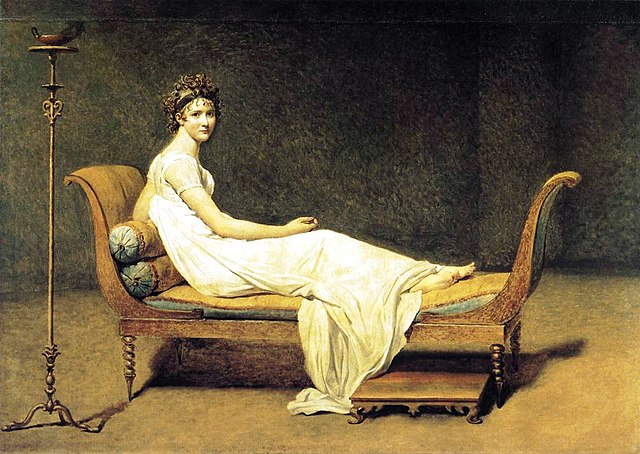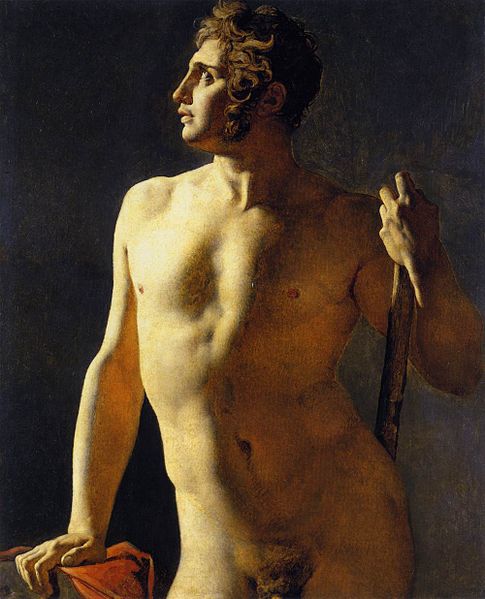Grande Odalisque, also known as Une Odalisque or La Grande Odalisque, is an oil painting of 1814 by Jean-Auguste-Dominique Ingres depicting an odalisque, or concubine. Ingres' contemporaries considered the work to signify Ingres' break from Neoclassicism, indicating a shift toward exotic Romanticism.
Grande Odalisque
Venus of Urbino (c. 1534), Titian
Portrait of Madame Récamier (1800), Jacques-Louis David
Jean-Auguste-Dominique Ingres
Jean-Auguste-Dominique Ingres was a French Neoclassical painter. Ingres was profoundly influenced by past artistic traditions and aspired to become the guardian of academic orthodoxy against the ascendant Romantic style. Although he considered himself a painter of history in the tradition of Nicolas Poussin and Jacques-Louis David, it is his portraits, both painted and drawn, that are recognized as his greatest legacy. His expressive distortions of form and space made him an important precursor of modern art, influencing Picasso, Matisse and other modernists.
Jean-Auguste-Dominique Ingres, c. 1850-67
Male Torso (1800), Montauban, Musée Ingres
The Envoys of Agamemnon, 1801, oil on canvas, École des Beaux Arts, Paris
Napoleon I on his Imperial Throne, 1806, oil on canvas, 260 x 163 cm, Musée de l'Armée, Paris







